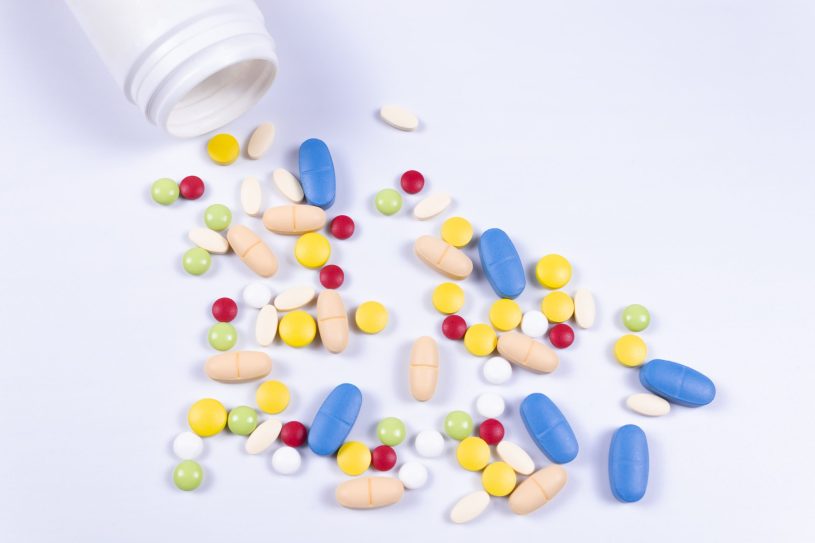Suboxone is a prescription-only drug that reduces or prevents symptoms of withdrawal that occur with opioid addiction. People use opioids to relieve acute or chronic pain of severe nature. These include morphine, codeine, hydrocodone, and hydromorphone. These act on specific sites called opioid receptors in the brain and peripheral nerves. By changing the level of mood-altering neurotransmitters, changes occur to the brain’s response to pain.
Table Of Contents:
- What Is Suboxone Withdrawal?
- What Are Suboxone Withdrawal Symptoms?
- How Long Does Suboxone Withdrawal Last?
- What Are Suboxone Withdrawal Precautions?
- How to Deal With Suboxone Withdrawal Detox and Relapse?
- What Can One Do to Ease the Withdrawal Phase?
- What Are the Final Notes of Suboxone Withdrawal?
- How to Cope With Suboxone Withdrawal?

As a result, the person will be pain-free and relaxed. The major drawback of this class of pain medications is habit-forming. The brain will become addicted to the euphoric feelings caused by opioids. As a result, one will start to seek more of it to quench the cravings. That’s when a scary long-term addiction kicks off.

What is Suboxone Withdrawal?
The woes increase when the user deprives the body of the opioid kick with discontinued use of the opioids. Symptoms of withdrawing are a host of physical and mental problems that arise after one stops taking opioids. Suboxone sublingual firms and tablets contain Buprenorphine and Naloxone. Doctors prescribe these drugs to reduce the severity of withdrawal symptoms or prevent their occurrence.
Buprenorphine is an opioid with milder effects. Meanwhile, Naloxone prevents narcotics from binding to their receptors. This is the reason doctors prescribe a weaker opioid in place of the stronger ones as it will make the cravings and other symptoms more manageable. On the other hand, Naloxone works to lessen the effects of opioids. It does this by preventing these drugs from binding to opioid receptors. In essence, the combination works in a dual manner to reduce cravings and manage other symptoms of withdrawal.
The individual should note that Suboxone itself has some degree of abuse potential. As a result, this makes things a bit more complex. When someone takes the drug for a long time, the risk for addiction increases greatly. For many, it may seem like an endless journey. First, opioid addiction has to be fought and after that Suboxone withdrawal is fought.
However, there are some tips and treatment strategies. These can make getting out of the withdrawal more comfortable.
Suboxone Withdrawal Symptoms
People withdrawing from Suboxone abuse show visible outward traits which change with time. These Include Digestive Disorders Like:
- Nausea
- Vomiting
- Abdominal pain
- Headaches and muscle ache
- Loss of sleep
- Increased irritation
- Depression and anxiety
- Weakness and loss of concentration
These symptoms are most visible in the early stages of withdrawal and disappear after some time, with the aid of adequate support and discipline.

Suboxone Withdrawal Timeline
Well, no one has a definitive answer for this. Of course, this depends on the doses one has taken and the duration of the therapy. Withdrawal can last from a few days to a month or even more in some cases. Moreover, the length of withdrawal symptoms also depends on personal physiology and genetic factors. The first 72 hours of withdrawal are the most difficult.
The symptoms go through a series of phases. Notably, the worst symptoms occur during the first three days as the drug starts leaving the bloodstream. In the next week, one will experience a combination of physical and psychological withdrawal symptoms. These include sleep problems, depressive thoughts, and body pains. As time moves forward, the symptoms become less prominent. Yet, the cravings can last for up to a month. This is the most vulnerable period after quitting the drug use, as there is a high risk of relapse. Because of the long-term risk for withdrawal, it is critical for individuals who have stopped using the drug to speak with a medical expert to avoid relapse.
As a Result, the Suboxone Withdrawal Schedule Is as Follows:
- Physical symptoms are at their worst after 72 hours
- After 1 week of withdrawal, aches and pains occur in the body coupled with sleeplessness and mood swings
- Depression occurs after two weeks
- Cravings and sadness after one month
Stages Of Treatment of Suboxone Withdrawal
Therapy is crucial to sustaining long-term recovery. It will be impossible to be abstinent for any period of time without it. The user must strictly adhere to the doctor’s recommendations. Doctors also should keep users updated on the situation. To provide Suboxone detox therapy, the doctor must meet specific qualifications. Provision for this is made in the Drug Addiction Treatment Act of 2000.
Suboxone withdrawal can also be treated pharmacologically using similar drugs like Methadone.
When prescribing medicines for Suboxone-dependent patients on methadone or buprenorphine, the possibility for drug interactions between the opioid and the psychiatric medication must be considered.
Some of the Drugs That Can Be Administered to Dependent Patients and the Procedures to Follow Includes:
Methadone
If Suboxone dependence symptoms are being treated with medicines that may raise methadone concentrations, a cardiogram with a corrected QT interval (a measure of cardiac electrical function) should be explored.
Evidence of Suboxone toxicity, such as changed mental status and reduced breathing, should be monitored closely. Several antibiotics (ciprofloxacin, fluconazole), psychotropics, and other medications are often co-administered with methadone and are said to raise plasma methadone concentrations (quetiapine, amitriptyline).
Clonidine
Clonidine is an agonist of the alpha-2 adrenergic receptor. It can help with sweating, diarrhea, vomiting, stomach cramps, chills, anxiety, sleeplessness, and tremors, among other physical symptoms of withdrawal. Drowsiness, dizziness, and low blood pressure are all possible side effects. As needed, clonidine should be administered in combination with symptomatic therapy. It should not be used in conjunction with Suboxone replacement.
Initial Use Or After Suboxone Relapse
Working with a skilled physician to identify the correct technique is the first and most essential step. Doctors will be able to determine the correct dose this way. When a relapsed individual is in a good condition of addiction, the doctor should strive to start treatment as soon as possible. If at all feasible, this should be done.
- The skilled doctor will assess whether or not the severe withdrawal symptoms have subsided. The transition will commence at this point
- The negative effects have been reduced to a bare minimum
- The desires have progressed from uncontrollable to controllable
One has now entered the transition stage. In addition, the individual has observed excellent outcomes from the program. After that, a doctor can determine whether or not the drug should be used as part of a maintenance regimen. Otherwise, the patient might totally cease using it by gradually reducing its dosage.
Precautions About Suboxone
Having a serious liver illness known as hepatic impairment? Then one should not take the drug without first thinking about it. The liver is critical to the body’s ability to remove harmful waste. It can be fatal if there is an impairment.
Anaphylactic shock has been described as an adverse reaction to various opioid medicines by users. Buprenorphine and naloxone are two medications that can be used to treat addiction. Buprenorphine and naloxone are both included in Suboxone. The drug cannot be used if the user is allergic to any of these medications.
Suboxone has the potential to induce life-threatening respiratory problems, which can lead to death. This is particularly true when administered through IV (intravenously).
NSWS (Neonatal Suboxone Withdrawal Syndrome) is a risk in pregnancy. Users who are pregnant might also expect it. It is curable, although it can be fatal to pregnant and newborn children. If a suboxone-dependent pregnant mother abruptly quits taking her medication, it might result in preterm labor, fetal discomfort, or fetal death.
While on the medication, patients should stay away from alcohol. This is due to the fact that the combination is quite likely to induce unconsciousness and death.
Detox is more difficult than detoxing from heroin or Oxycontin. Many long-term users believe this. This is due to the fact that Suboxone can remain in the system for up to 9 days, causing discomfort. A detox might take weeks or months as a result. It also comes with physical and mental problems, as well as bouts of severe depression.
Many people who have made the decision to stop using the medication face an unpleasant awakening during this period. Physical and emotional withdrawals can be quite painful. As a result, Suboxone relapse is rather prevalent.

Suboxone Detox and Relapse
Relapse is defined as falling or slipping into a prior state, behavior, or habit. Generally, the addict is overwhelmed by feelings of shame, remorse, helplessness, and failure. Relapse occurs at this point. As a result, the prospect of detoxing and beginning over might be excruciating. As a result, the prospect of remaining on the drug becomes more appealing.
The drug was previously regarded as a miracle medication for the treatment of opiate addiction. Unfortunately, it has now become an epidemic in and of itself. To begin with, many doctors have overprescribed it. Then there’s the user base, which is mostly uninformed. This is due to their lack of understanding of the drug’s potential for addiction and misuse.
Some doctors were first solely interested in the financial rewards. Doctors can provide Suboxone for long-term maintenance. As a consequence, we now have patients on Suboxone maintenance for more than ten years. As a result, it appears that we have swapped illicit substances like heroin for the legal Suboxone.
People who have quit using Suboxone have turned to heroin and Oxycontin as a substitute. These people started doing it as soon as the withdrawal symptoms started. It was due to the fact that it is both physically and psychologically exhausting. These individuals did not expect the upkeep to be as bad as it was. In fact, many people believe that quitting Suboxone is more difficult than quitting their previous addiction. This is why some people began using the drug in the first place.
Detoxing off Suboxone requires a thorough approach. It should include both physical and mental assistance. At the same time, loved ones, knowledgeable groups, and treatment should be available. It should not be attempted personally.
Easing Suboxone Withdrawal Phase
The withdrawal phase is a very difficult time to cope with. Cravings will reach their pinnacle. Then the individuals will have the pain of fighting the weird withdrawal symptoms. Finally, it leaves the body with a heap of problems. This is the time when cravings can topple the achievements so far. But with little changes in thoughts and lifestyle, one can emerge a winner.
Consider the following tips and strategies to become cleaner again:
Make Sure to Eat Well
A balanced diet containing all essential nutrients will make sure that the person maintains overall health. No one wants to be ill while craving drugs. A healthy body is more likely to resist those cravings than a diseased one.
Make Sure to Exercise
Mild exercises of any type will help ease the withdrawal symptoms while making an individual healthier. Also, certain exercises release mood-enhancing chemicals in the brain. As a result, it may curb things for the drug.
Make Sure to Sleep Well
Quality sleep is a must when a person is bidding a final farewell to the addiction. When one gets to sleep, the brain gets enough rest. So, one wakes up ready to endure another day of withdrawal symptoms. Moreover, mental problems like anxiety and depression also ease with quality sleep.
Do Not Rush
Remember that rushing to freedom from addiction will only make things more difficult. Getting back to sobriety is a long-term process. So, be patient enough to achieve the treatment goal.
Make Sure to Be Informed
Being aware of the condition in advance will allow the individual more time to get prepared. This way, one can cope with the problems better. Make sure to listen to the doctor carefully and follow the instructions.
Stay Close to Friends and Family
An emotional support team that comprises close friends and family members. In fact, it’s one of the most important parts of the total Suboxone withdrawal treatment plan. Stay in regular touch with a doctor: This is more important, especially during the first few days of the withdrawal phase. It will be when the symptoms are at their worst. Still, scheduling routine doctor visits are necessary. This way, progress can be tracked.
Maintaining contact with close relatives and friends, even if it is not necessary to inform families about probable withdrawal symptoms or the recovery process, can help get the emotional support needed to get through detox.
Relaxation Time or Hobbies
Finding time to rest in the middle of daily life might be difficult, but it is critical for healing. Many people who are withdrawing from Suboxone or other opioids find it difficult to unwind in a healthy way, but having a fun activity (writing, painting, crafts, etc.) might help you avoid relapsing back to substance abuse.
Accepting the Situation
Recognize that withdrawal is a normal part of the healing process. It may be possible to replace feelings of guilt, anger, and sadness with feelings of pleasure and pride by adopting a more positive attitude toward the rehabilitation process.
Final Notes on Suboxone Withdrawal
Suboxone withdrawal is not suggested for pregnant women who are addicted since it might lead to miscarriage or early birth. Methadone maintenance therapy is the preferred treatment option for pregnant addicts.
This necessitates the supervision of a group of substance addiction treatment experts who are:
- Educated and skilled in the treatment of Suboxone addiction
- All of the factors that are contributing to the client's present condition are known
- Dedicated to providing a thorough treatment plan that is tailored to the client's specific needs
- Long-term assistance is available
How to Cope With Suboxone Withdrawal
Suboxone detox is a challenging but doable aim. A treatment plan’s success is determined by a number of elements. These include the desire to rehabilitate the duration of the abuse, and the efforts of a rehabilitation team.
The path to rehabilitation is long and winding. As a result, rehabilitation treatment is the most effective way to return to regular life. Suboxone clinics near me specialize in treating this particular subset of individuals. These facilities have a staff of healthcare experts and counselors that are highly qualified and knowledgeable. These people will also give a wide range of medical treatments, counseling, and follow-up services.
Hope Without Commitment
Find the best treatment options. Call our free and confidential helpline
Most private insurances accepted
Page Sources
- Blum K., Oscar-Berman M., Femino J., et al. Withdrawal from Buprenorphine/Naloxone and Maintenance with a Natural Dopaminergic Agonist: A Cautionary Note. Journal of Addiction Research and Therapy. 2013; 4(2): 10.4172/2155-6105.1000146. doi:10.4172/2155-6105.1000146. https://www.ncbi.nlm.nih.gov/pmc/articles/PMC3835595/.
- Westermeyer J., McCance-Katz E. F. Course and treatment of buprenorphine/naloxone withdrawal: an analysis of case reports. The American Journal on Addictions. 2012; 21(5): 401–403. doi:10.1111/j.1521-0391.2012.00259.x. https://www.ncbi.nlm.nih.gov/pmc/articles/PMC3723396/.
- Krantz et al., 2009, Pharmacologic Guidelines for Treating Individuals with Post-Traumatic Stress Disorder and Co-Occurring Suboxone Use Disorders: 4, 4(2009). https://www.store.samhsa.gov/sites/default/files/d7/priv/sma12-4688.pdf/

 Authored by
Authored by  Reviewed by
Reviewed by 